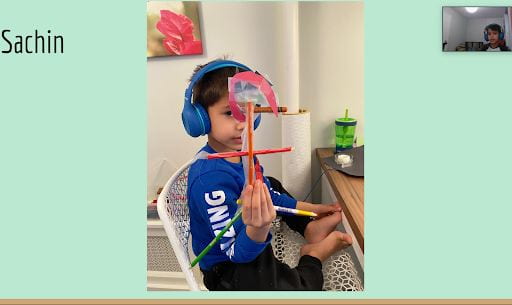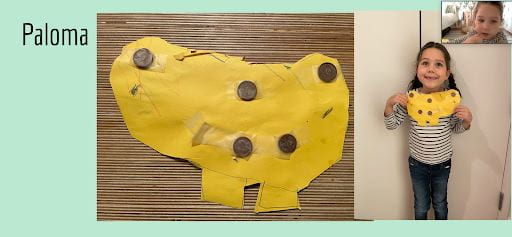 Community is at the heart of early childhood education. We rely on our classroom community to connect with one other, to create positive learning environments, to enrich programming, to build and foster strong relationships, and to deepen our understanding of identity and cultural knowledge. By building community in our Kindergarten, students take risks and persevere when faced with a challenge.
Community is at the heart of early childhood education. We rely on our classroom community to connect with one other, to create positive learning environments, to enrich programming, to build and foster strong relationships, and to deepen our understanding of identity and cultural knowledge. By building community in our Kindergarten, students take risks and persevere when faced with a challenge.
Under COVID-19, our Kindergarten classroom no longer looked like a “typical” early childhood room at LREI. As previously stated, each student’s desk faced forward and all desks were six feet apart in order to maintain social distance. Students were only able to talk to those sitting next to them unless they stood up and walked over to a friend across the room. Initially, kindergarteners selected one worktime choice and worked independently at their desks.
As the year progressed, we introduced different ways for our kindergarteners to interact with one another in a more collaborative manner. Initially, we used plexiglass barriers to “social distance” and eventually three feet of distance while masked. We moved furniture and created open spaces where kindergarten students could work and play with each other.
These new ways of playing in the classroom helped build a closer relationship amongst kindergarteners. They learned about one another’s interests and began to lead worktime activities such as paperwork projects, dance, bookmaking, and collaborative building. In addition, we delved deeper into identity work by studying our names in a Name Celebration, Storytelling “our truths,” and creating monthly self-portraits. Through this work, we learned more about one another’s traditions in addition to cultural and racial identity of oneself and others. We incorporated puppets to problem solve, as children can easily relate to them and find them engaging.
I personally found myself spending less time intervening in conflict resolution between students. My kindergarteners demanded routines and felt at ease with our transitions and daily schedule. They also felt empowered by the clear understanding of our classroom norms or rules. When I was absent, they could easily tell the substitute teacher how the class functioned minute by minute.
There was a clear cultural shift that brought our Kindergarten closer together. Kindergarteners felt safe to share “their truths” and to stand up for a friend when boundaries were crossed. The Puppet Curriculum I had previously developed, evolved under COVID-19. We now incorporated puppets to represent different changemakers we learned about as well “big feelings.”
After teaching for more than 20 years, I realize I am a creature of habit and COVID-19 has definitely opened my eyes to new possibilities of teaching. I incorporate more technology into my practice by sharing work with families on Google Slides as opposed to a published Classroom Book. The Puppet Curriculum I had previously developed, benefited from incorporating the concept of “mirrors and windows” first introduced by Emily Style for the National SEED Project:
A mirror is a story that reflects your own culture and helps you build your own identity. A window is a resource that offers you a view into someone else’s experience.
In order to better understand oneself, it’s important to understand others.
This self-study under COVID-19 has made me think a lot about myself as an early childhood educator. I have had to adapt some of my favorite teaching practices during remote learning and in-person due to social distancing and safety protocols. I hope to bring back some of those practices, in addition to incorporating what I have done this year under a Global Pandemic.






